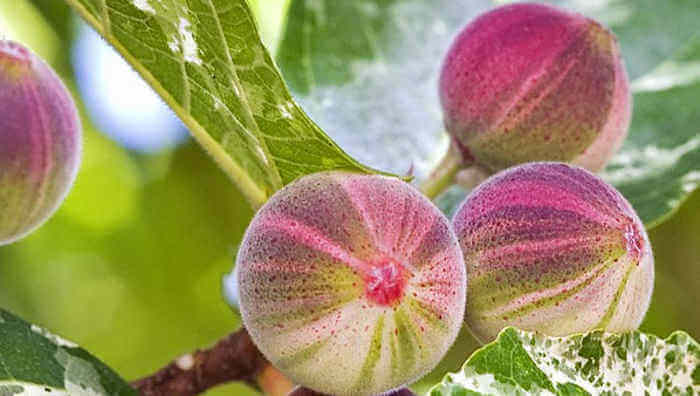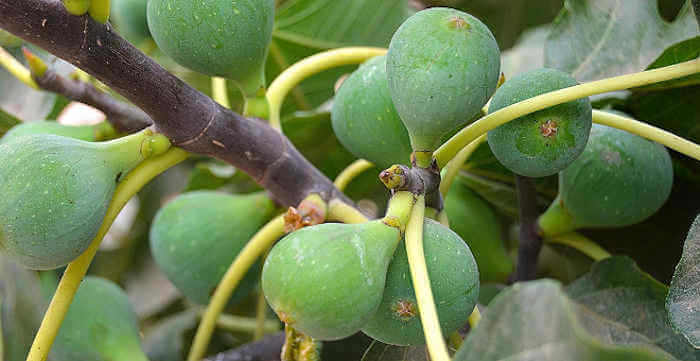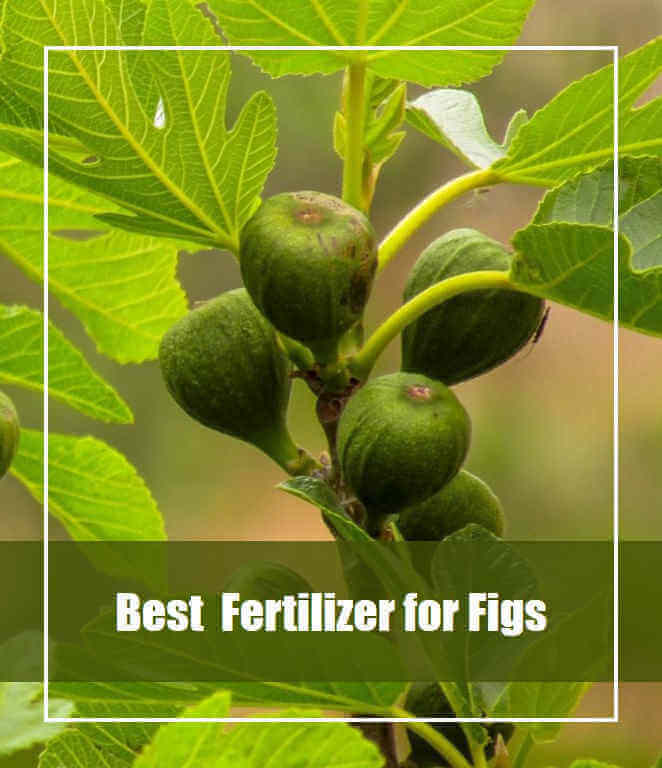Are your fig tree leaves turning yellow and not producing fruits? Or are the fig trees dropping unripe figs? If yes, then it may happen for a nutritional deficiency. And that’s why you need fertilizer for fig trees to promote foliar and fruit growth.
If you didn’t feed your fig trees yet and didn’t see any symptoms like that, then you are lucky. But remember without feeding you won’t get healthy fig trees that produce bigger and better fruits.
Now the question; what is the best fertilizer for fig trees?
Any type of fruit or all-purpose fertilizer that has a balanced ratio of NPK and some other macro and micronutrients. Also, the best fertilizer doesn’t contain any harsh and toxic chemicals.
For your convenience, I have listed and reviewed the best fertilizer for fig trees that will help you to pick the perfect fertilizer for your fig plants.
In a hurry? Here is the overall best fertilizer for fig trees that you can buy right now-
Best Fertilizer for Fig Trees-Comparisons
| Fertilizer | NPK | Price |
|---|---|---|
| Jobe’s Organics All-Purpose Fertilizer | 4-4-4 | |
| Miracle-Gro Fruit & Citrus Plant Food Spikes | 10-15-15 | |
| Dr. Earth Premium Gold All Purpose Fertilizer | 4-4-4 | |
| Espoma CT4 4-Pound Citrus-tone Plant Food | 5-2-6 | |
| Jobe's Tree & Shrub Fertilizer Spikes | 8-11-11 | |
| Winchester Gardens Select Organics Granular Fertilize | 2-3-4 | |
| Fox Farm FX14049 Liquid Nutrient(Trio Formula) | 6-4-4 2-8-4 .1-.3-.7 |
Best Fertilizer for Fig Trees- Reviews
1. Jobe’s Organics All-Purpose Fertilizer with Biozome
This is an OMRI listed well balanced organic granular fertilizer. Why is it called well-balanced fertilizer? Because it contains the major macronutrients (nitrogen, phosphorus, and potassium) in equal proportion.
The NPK number of this fertilizer is 4-4-4. What does it mean? It means the fertilizer contains 4% each of those macronutrients that can help you to get a bushy fig tree with dark green leaves and bigger fruits.
Do you think only the well-balanced NPK number makes this fertilizer best for fig trees? Of course not. There are more reasons for being the best.
This fertilizer doesn’t have any synthetic chemicals. All the nutrients are derived from feather meal, bone meal, proceed poultry manure, and sulfate of potash.
Also, It contains some non-plant food ingredients named archaea, endomycorrhizal, and some beneficial bacteria. All of them together are called “biozome” that increases the nutrient supply, soil quality, and secondary metabolite production.
So, if you find the best organic fertilizer for fig trees, this eco-friendly all-purpose fertilizer is for you. For your convenience, this fertilizer is also available in spike (Jobe’s Organics All-Purpose Fertilizer Spikes).
2. Miracle-Gro Fruit & Citrus Plant Food Spikes
Miracle-Gro is a well-renowned brand that you already know. This brand has been producing some miracle gardening products since 1940 and most of the products are the best sellers rank in its category.
Now:
Let’s talk about the miracle-Gro spikes fertilizer that is undoubtedly the best spike fertilizer for fig trees because of its composition.
The NPK ratio of this fertilizer is 10-15-15. According to the NPK ratio, we have seen that the fertilizer has more phosphorus and potassium and both are essential for fruit production and overall plant health respectively.
If your fig trees are at the fruiting stage and need fertilizer, it is the best fig tree fertilizer for you. Because it contains low nitrogen. Higher nitrogen fertilizer promotes the growth of foliage that can prevent fruiting.
On the other hand, If your fig trees are developing, pick the Miracle-Gro Tree & Shrub Plant Food Spikes. It has a 15-5-10 NPK number.
3. Dr. Earth Premium Gold All Purpose Fertilizer
Dr.Earth all-purpose fertilizer is another balanced fertilizer for fig trees. This fertilizer has a 4-4-4 NPK number and It is an OMRI, OIM, and NOP listed organic fertilizer that doesn’t have any modified and toxic ingredients.
The containing nutrients are derived from alfalfa meal, bone meal, fishbone meal, kelp meal. kelp flour, feather meal, and potassium sulfate.
How does the fig tree benefit from this fertilizer?
The fig trees can absorb 4% nitrogen, phosphorus, and potassium over the whole season from this fertilizer that is essential for green leaves, root development, and more fruits.
Want to know the best part of this fertilizer?
This fertilizer is made from a natural handcrafted blend that is rich with minerals, proteins, carbohydrates, humic acids & trace elements and you know, all the elements are essential for fruiting and developing the fig trees.
Also, It has beneficial soil microbes and mycorrhizae for improving soil health as well as fig trees.
4. Espoma CT4 Citrus-tone Plant Food
Espoma citrus tone fertilizer is specially designed for citrus fruits. But it is also compatible with fig trees. This fertilizer has 5% nitrogen, 2% phosphorus, and 6% potassium.
Look;
The Espoma CT4 fertilizer contains more nitrogen and potassium than phosphorus. This means this fertilizer helps you to get a healthy bushy fig tree with strong roots which will further help to produce bigger and tastier fruits.
Another good news:
This fertilizer has 3% water-insoluble slow-release nitrogen and 2% water-soluble nitrogen. Your fig trees can take water-soluble nitrogen instantly and slow-release nitrogen can slowly feed the plant regularly.
And, you know it is very important to feed regularly to get healthy plants.
Also, this is a certified fertilizer for organic gardening. All the active ingredients are derived from organic substances.
So, to get strong bushy fig trees with the sweetest and big fig, this organic fertilizer is the right choice to pick for your fig trees.
5. Jobe’s Tree & Shrub Fertilizer Spikes
Are your fig trees growth is stunting and dropping a lot of leaves? Then Jobe’s tree & shrub fertilizer spike is the solution for you.
Want to know how this fertilizer promotes plant growth and increases the green foliage of your fig?
This is the slow and time-release fertilizer and has a high amount of nitrogen. So, it can release nitrogen and other nutrients when the plants need it.
What is the best part of this fertilizer?
This is an easy-to-use fertilizer and has less possibility of running off.
This fertilizer has a different NPK ratio according to the number of spikes of the package. The NPK number is 16-4-4 for 5 spikes package, 15-3-3 for 9 spikes package, 16-4-4 for 15 spikes, 160 spikes package.
Remember:
The higher number of nitrogen helps the fig to produce dark green leaves and active root growth. So, pick it for developing fig trees.
For more and bigger fruits, you should pick the Jobe’s fruit fertilizer spike. It has lower nitrogen than other macronutrients.
6. Winchester Gardens Select Organics Berry Granular Fertilizer
Winchester Gardens is another organic fruit tree fertilizer for your figs. Though this fertilizer is specially modified for berries, but your fig trees may also like it.
This fertilizer has a 2-3-4 NPK number. The higher phosphorus and potassium promote fruit development and plant health. Also, it contains some other trace elements which have an important role to produce bigger, healthy and tastier fruits.
And you may be happy to know that the active ingredients are organic. The organic ingredients also promote the growth of beneficial microbes as well as fig trees.
Slow and long-lasting nutrient releasing capability is another likable feature of this fertilizer. The fertilizer breakdowns slowly after applying and feeding the plants for a long time. Impressive, right?
So, improve the health of your fig trees and produce more healthy fruits with Winchester Gardens granular fertilizer.
7. Fox Farm FX14049 Liquid Nutrient Trio Soil Formula
Last but not least, I am introducing you to the best liquid fertilizer for fig trees– Fox Farm FX14049 Liquid Nutrient Trio Soil Formula.
Probably, a question has arisen in your brain? What does the trio mean?
The Fox Farm provides a pack of three and all the three fertilizers have different compositions. The ‘Grow Big’ has a 6-4-4 NPK number which can be perfect for the vegetative stage. That’s why it also can be the best fertilizer for fiddle leaf fig and The ‘Tiger Bloom’ is suitable for the flowering stage that has a 2-8-4 NPK number. Tiger Bloom also can be the best fertilizer for fruiting fig trees.
The last one called ‘Big Bloom’ has a .1-.3-.7 NPK number which is perfect for all growing stages and between the three fertilizers only ‘Big Bloom’ is organic. It contains earthworm castings and bat guano.
If you want the best liquid fertilizer for your fig trees, pick the Fox Farm FX14049 Liquid plant food.
When to Fertilize Fig Trees?

You know:
Plants can’t talk, they only show symptoms. So, you have to understand the plant needs to feed them. Yellow leaves, slow-growing, dropping lots of figs are the common sign of nutrient deficiency.
Moreover, sometimes figs need fertilizer regularly if they grow in sandy soil. Because sandy soil can leach out the nutrients.
So, how often to fertilize fig trees?
Here are the common rules that you should follow-
The growing season is the best time to fertilize. But don’t apply any fertilizer when the growing fig cuttings have no leaves. Let the cuttings emerge in spring and feed them thrice per year- in late winter, mid-spring and mid-summer.
But remember this:
You should add fertilizer when you understand that they really need it. Because over-fertilizing has some side effects. Over fertilized fig trees promote vegetative growth rather than fruit production. Thereafter, if the over-fertilized fig trees produce fruits, then it will drop at premature stages.
Also, stop feeding the fig trees before the first frost comes and after the figs form. Because the fertilizer promotes the new tender growth and frost can damage it.
How to Fertilize Fig Trees?
Before fertilizing fig trees, you have to determine how much fertilizer you need for your fig trees?
The required amount of fertilizer will vary depending on the types of fertilizer (i.e.: liquid, granular, spike) and the outermost circumference of the tree branches.
Generally, 1 ounce/28 gram fertilizer in a month is enough for 1-2 years old fig trees but older trees need more food. Feed older trees ⅓ lbs. of fertilizer for 1 foot of bush height.
This is the common rule but the amount will be different according to the composition and formula of fertilizers. That’s why manufacturers provide instructions and dosages for different plants and vegetables. You should read the label and follow the instructions.
Now; it’s time to fertilize the fig?
Dripping fertilizer too close can damage your fig tree. Make a circle about 1 foot away from the tree trunk and sprinkle the fertilizer just past the circle line. For potted fig tree, spread the fertilizer around the edge of the pot.
Don’t apply all the fertilizer in one place or on the base of the plant.
What is the Best Type of Fertilizer for Fig Trees?
You know different types of fertilizer available today. But what form of fertilizer can be best for figs? You can pick any form of fertilizer. Every form of fertilizer is compatible and best for outdoor and potted figs.
You have to just consider the ratio of nitrogen, phosphorus, potassium in the fertilizer. Generally, slow-release, organic and balanced fertilizer can be perfect for fig trees that have equal NPK number (for example 4-4-4 or 10-10-10)
But if your fig trees are at flowering and fruiting stages, you should pick that fertilizer containing lower nitrogen and higher phosphorus.
Homemade Fertilizer for Fig Trees
1. Fish Waste
The dirty fish tank or aquarium water is harmful to fish but it is healthy for trees. It contains beneficial bacteria, NPK, and other micronutrients that will accelerate plant growth and root development.
Before watering the fish waste, make sure the water hasn’t any excessive salt materials.
2. Banana Peels
If you throw the peels after eating a banana, then you don’t know banana peels can be used as fertilizer for trees.
I didn’t even know a few days ago. To use the peels as fertilizer- Cut the banana peels into small pieces and spread the residues on the soil around the tree.
3. Coffee Grounds
Coffee grounds contain 2%, ½ %, and 1% nitrogen, phosphorus, and potash respectively. That’s why it may be the best household fertilizer for fig trees.
It adds organic materials to the soil that improve soil fertility and drainage. To use the coffee ground as fertilizer-
Sprinkle the coffee ground on the soil and scratch the top soil.
Frequently Asked Questions
#Why aren’t Fig Trees Producing Fruit?

Fig trees aren’t producing fruit for three reasons. The age of the fig trees, excess nitrogen, and water stress are the main culprits.
1. The Age of the Fig Trees
Generally, fig trees take 2 years to reach the maturity stage. Sometimes it takes 6 years. Plants will produce fruits only after the maturity stage. So if your plants are under maturity and not bearing fruit, then waiting is the wise idea to get healthy fruits.
2. Excessive Nitrogen
Nitrogen promotes vegetative growth. So, nitrogen needs much in a growing stage but if you apply too much nitrogen in after maturity. The fruits won’t produce.
If you determine that too much nitrogen prevents the fruiting. Add fertilizer that contains low nitrogen and high phosphorus.
3. Water Stress
Both too much water and too little water can be the cause of water stress. In water stress conditions fig trees waste all the energy to survive. So, the trees don’t get enough energy for producing fruits.
That’s why proper watering is essential for fruiting. Remember, inconsistent watering also is a reason for dropping fruits.
Too Little Water: Increase the water. If the temperature is above 18-degree Celsius, water once per day will be enough. Water the figs 2 times a day if the temperature increases.
Too Much Water: Improve the drainage in such a way that water never remains stagnant.
#Why are Fig Tree Leaves Falling off?
Falling off the leaves is the common fig tree problem. But before taking any action, you must know what the causes of falling fig leaves are. Winter, Stress conditions and pests are the main reasons for this problem.
Let’s discuss in detail-
Winter
Winter is the time to deep sleep. Fig trees go dormant in winter and it is the part of their life cycle. So, stay calm, if the leaves fall off in winter. Winterizing and Protect the fig trees. The new leaves will comes in spring automatically.
Stress Condition
Fig trees are sensitive to environmental changes. Moving the potted fig refers to change the humidity, temperature, and moisture. So, moving the figs suddenly can stress the fig trees.
According to the expert, you have to choose a fixed place for growing figs. Thereafter, if you need to change the location, do it gradually.
And you know that;
Improper watering is the reason for water stress. So, don’t forget to water properly.
Pests
Beetles, earwigs, fruit flies, scale insects, nematodes, and spider mites are the most common pest of the fig tree. These insects can be the cause of leaves falling and other diseases.
If you found any pests on the tree, spray neem oil or insecticidal soap to kill them.
#Are Coffee Grounds Good for Fig Trees?
Yes! Coffee grounds are good for fig trees. They can provide nitrogen and increase organic matter in the soil that helps the plant to promote foliage and root growth.
#Are Banana Peels Good for Fig Trees?
Banana peels are good to feed the fig trees. They can provide potassium and some other essential plant nutrients to the plant such as phosphorus, magnesium, and nitrogen.
#Can You Use Epsom Salt on Fig Trees?
Epsom salt is completely safe for figs. You can mix 1 tablespoon of Epsom salt into a gallon of water and feed once per 1-2 months to provide magnesium.
Conclusion
Growing fig trees in pots or outdoors is not a difficult task. Just you have to know how to grow and what to feed. Without feeding fig trees, you won’t get a good production. So, fertilizer is essential for dark green leaves and healthier fruits.
I hope this article helped you to find the best fertilizer for fig trees. If you have any other recommendations and queries, don’t forget to share it with us.









